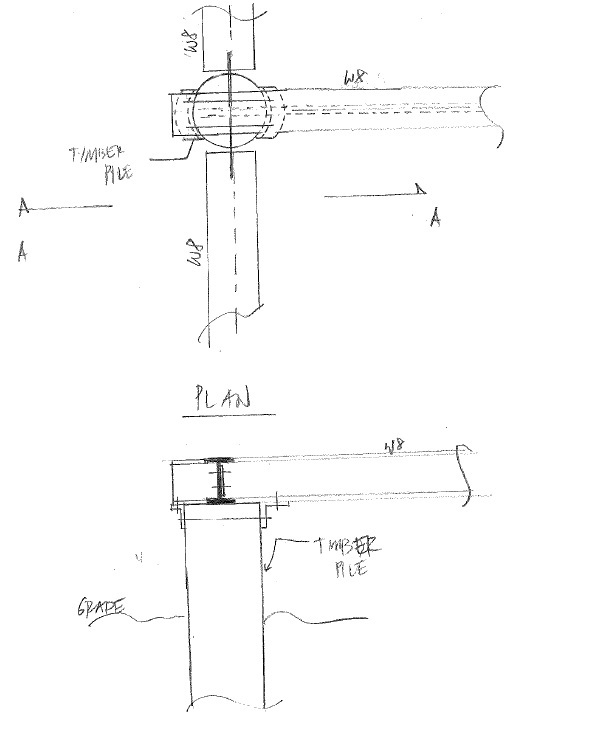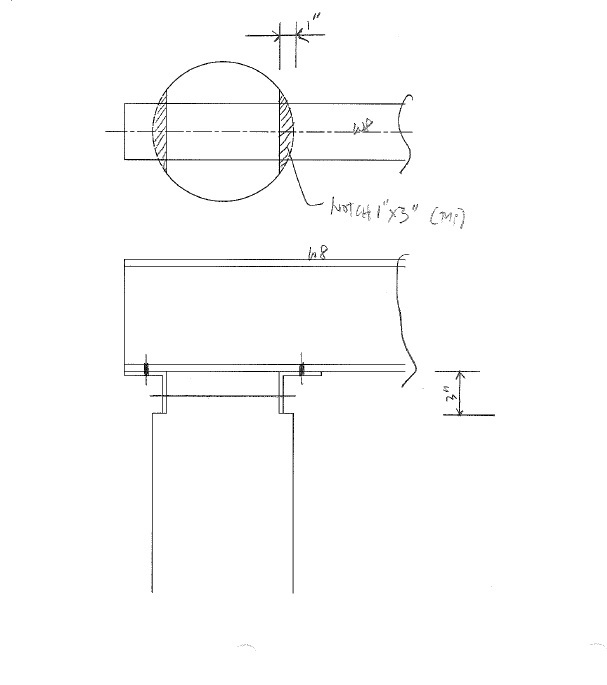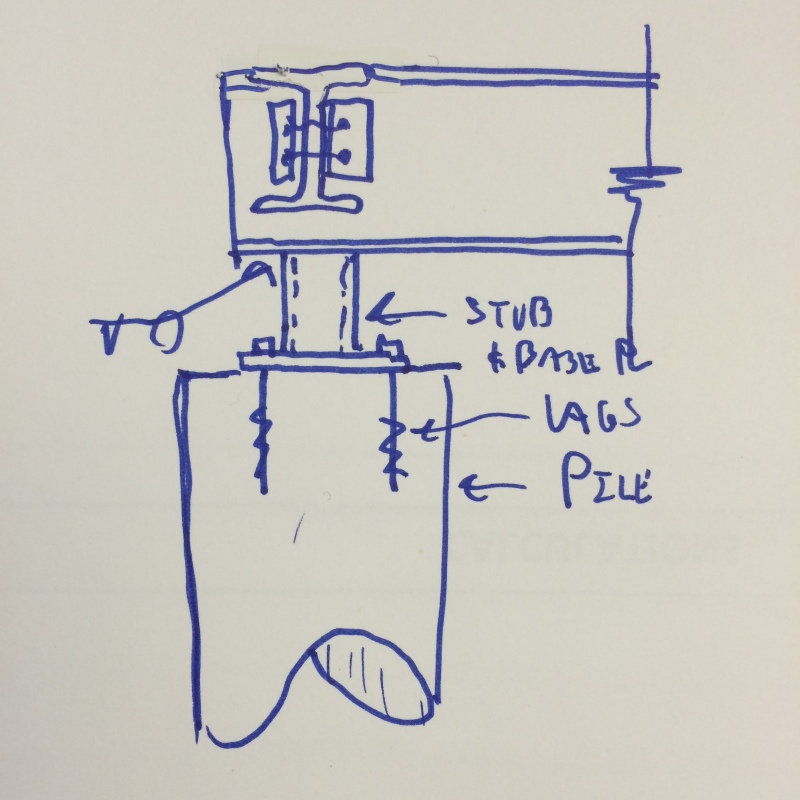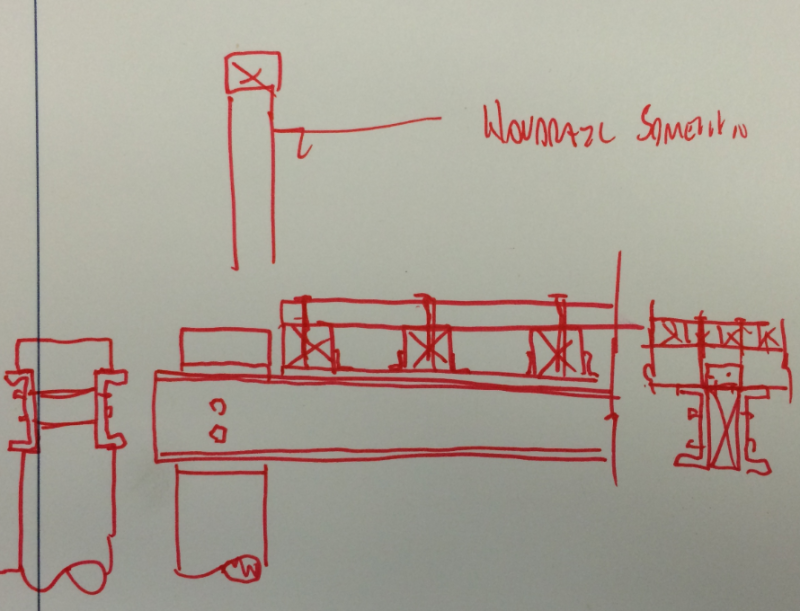delagina
Structural
- Sep 18, 2010
- 1,008
I can't figure out the best connection to do this.
if the timber pile was square, I could have used seat angle at the bottom of the beam.
but I prefer to use the more common round timber pile.
is there a round seat angle?
I could also install anchor bolts on top of the pile and bottom flange of the beam?

if the timber pile was square, I could have used seat angle at the bottom of the beam.
but I prefer to use the more common round timber pile.
is there a round seat angle?
I could also install anchor bolts on top of the pile and bottom flange of the beam?




